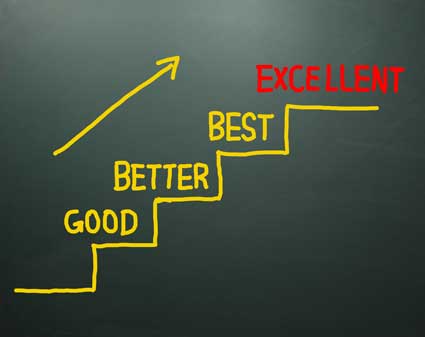ORDER
The following is a general outline of the Order that should be followed in constructing your business plan. With the exception of the Executive Summary and the Marketing Summary, all other summaries should be no more than one [1] paragraph in length.
The purpose of each summary is to give the reader an overview of the upcoming segments. This is helpful to your reader when reviewing your business plan since almost all readers of your business plan will be looking to read specific details and will use only those segments of interest to them. Any time you help the reader find what they are looking for, then you increase your favor with that person and increase your opportunities for funding or for a successful business presentation.
-
- EXECUTIVE SUMMARY
- Company Profile
- PRODUCTS and SERVICES SUMMARY
- Products and Services Description Details
- MARKETING SUMMARY
- Marketing Plan and Marketing Strategy
- Target Market or Customers
- Competition
- Advertising and Promotions
- Sales and Distribution
- OPERATIONS SUMMARY
- Operations & Operational Plan
- Client Account Management and Credit and Policies
- FINANCIAL SUMMARY
- Accounting and Management - Cash Flow Statements and Management Structure
- Financial Planning and Projected Balance Sheet
- SUPPORT SUMMARY
- Appendices
WHAT TO PUT IN
Details, interesting details, and keep it interesting!
Think of what you would tell a potential client in each of the above sections if you were working to persuade them to complete a deal with you that was worth several thousand or hundreds of thousands of dollars. This is the primary way to approach this part of writing your business plan.
Yes, it's true: some of these segments would not be the business of your average client. But stretch your thinking here just a bit, and consider what you would say if the person listening to you were a close friend or confidant and you were trying to persuade them that your business was strong, profitable, and worth taking a look at for financial support. This thought process will reveal to you what to put in and how to approach it.
WHAT TO LEAVE OUT
You will want to leave out everything personal. If it is your personal career change [unless that career change brought you to the creation of your company], leave it out. If your family suffered serious and long term setbacks, leave it out. If you filed a personal bankruptcy, definitely leave that information out of your business plan. If you are desperate for funding to help your ailing and aging mother, leave it out.
Remember the more desperate things in life that sometimes propel us to certain individuals or companies are not usually the more attractive details of our business decisions. People who read your business plan should be reading the most attractive summary of you and your business available anywhere. If you feel it is necessary to discuss any of these personal items with your reader, then wait until they ask you a specific question. Some things should remain personal unless you are asked specifically about them.
Warning: Most of your personal information that you believe you can positively spin will backfire on you, and you will likely not be perceived by your reader as having a positive point at all. In other words, unless you are a professional public relations person, completely avoid disclosure of your personal hardships and struggles unless, and only if specifically asked by a banker or investor.
SEGMENT BY SEGMENT DETAILS
If you cover each of these details in each of the business plan's segments, then your final plan will be comprehensive and answer any banker's or investor's questions. Ultimately, this should be one of the goals of your business plan since every banker or investor will ask to see your business plan so they can judge your plans, decision making process, strategies, and the bottom line.
- EXECUTIVE SUMMARY
- For a more in depth coverage of the details of this portion of your business plan
- You will write this section LAST and place it in front of the entire business plan for a quick review and overview of the entire document. Two to three pages is the maximum for the Executive Summary.
- Company Profile
- Mission and Vision statements.
- Product or services marketed [this is a one-liner].
- Target market [again, a one-liner].
- Business form [sole prop, LLC, LLP, LP, corporation, or partnership].
- Company history [what sparked it, recent struggles, and successes, use only one paragraph].
- Company strengths [one paragraph],
- Long term goals [one paragraph, no more].
- PRODUCTS and SERVICES SUMMARY
1. Each Summary should include the high points of the detailed section beneath it. You may want to limit it to a certain number of points in each summary, or you may choose to simply write one or two paragraphs in a summation style to accomplish this goal. Either way, most Summary sections should be less than one page unless otherwise noted.
2. Do not add anything into the Summary that does not exist in the detailed section. Do not bore your reader with the same language as your detailed section or a "copy and paste" of certain sentences, but be sure to keep the essence of the details congruent between the Summary and the detailed sections.
- Products and Services Description Details
1. Describe your Products or Services in detail in this section. Use common sense here; if you have 300 products, you do not want to list each of them separately. But you may want to group them according to category and explain why this group of products is so important to your target market and to your business.
2. Your description details should include the range of quality (qualities) in the different products or services that your company offers. In this description is the range of pricing as well, along with which segment of the market that product or service is designed to capture.
3. Descriptions should be worded in such a way as to emphasize what it is about your product or service that sets your company apart from its competitors in the market place. Why do your clients want YOUR product or service over the apparently same product or service offered by another company?
4. The Products and Services description details should be limited to no more than one five sentence paragraph per product category for a total of no more than two pages of product descriptions.
- MARKETING SUMMARY
- Everything mentioned in the Products and Services Summary section above applies here as well.
- Aside from the Executive Summary this is the largest Summary as it includes information from 5 detailed subsections. Allow yourself up to two (2) full pages for this Summary. Although that is the same layout size as the Executive Summary, bankers and investors will not object to a fat Summary in the section that tells them the most about profitability other than the Financial Summary.
- Marketing Plan and Marketing Strategy
- Bankers and investors want to know exactly what your plan is for marketing your products or services.
- This is a section for specifics. How are you going to reach your market? Advertising? Door to door sales? Retail sales? Direct marketing?
- How many people do you have helping you? How are you compensating them? Is their compensation plan one that will keep them on board or create a revolving door? What do you have in their plan that sows seeds of salesman loyalty to your company?
- What will your company do if your Marketing Plan is thwarted by competition or other circumstances? What is your secondary plan of action with regards to marketing your product or services?
- Marketing Strategy is equally important here. Your Marketing Strategy should be detailed, lengthy, and clearly laid out. Allow up to 1 ½ pages just for this subsection.
- A Marketing Strategy should include the following in the content detail:
- Description of your target market or your clients.
- How will you distribute your product?
- Explain how your company is unique in what it offers. What is it that your company gives the marketplace that the marketplace is starving for, but is otherwise unavailable?
- Will you compete in the market place by means of your pricing or your product's quality? How will you capture your market share? What will cause your clients to remain loyal to your company?
- How will you spend advertising and marketing budgets? Will you purchase television or radio spots? Will you target a niche portion of the market?
- A definition of the company and its market place position. Paint the company's "personality" for the reader so that they have a clear image of the company's place and image in the market.
- Target Market and Customers
1. Demographics [gender, race, income, and education level of potential clients].
- Competition
1. Name names and list web addresses.
2. Statistics about your competition.
3. Insider's reports about client relations.
4. Are they located near your business? Are they local, regional, or national? How does that directly affect your company?
5. Are they strong in advertising and promotions? Are they stable and reliable in the eyes of the customer?
6. Do they provide variety in their product availability? How is their product quality?
7. What are their sales methods and credit policies?
8. Is their pricing competitive? Or do they price because of a standard of high quality in their product?
- Advertising and Promotions
- What are your company's strategies for Advertising and Promotions?
- Do you have a regular budget established for promoting your company's products or services? If so, how much?
- Are you frugal in your approach in using staff members or do you have a larger budget for professional promotions using people to give your company a polished public image?
- Do you have planned events strategically executed monthly or quarterly that are designed to continually keep your company and its products or services forever in the front of the minds of your target market? If so, what are those events and how do they work? What are the tangible results that your company regularly realizes from them? Do you envision any changes or needs in your Advertising and Promotions strategy?
- Sales and Distribution
1. What size and type of sales staff do you have promoting your company's products?
2. By what percentage has your sales staff outperformed itself over last year or over last month?
3. Are the salesmen directly involved in the distribution of the product or is the distribution handled by a separate handler or department?
4. What is the chain of distribution for your company? Once the order is placed, what route does the product or service take to get to the customer?
- OPERATIONS SUMMARY
- Everything mentioned in the Products and Services Summary section above applies here as well.
- This Summary should cover the details of your day-to-day operations.
- Operations and Operational Plan
- How does your business operate on a day-to-day basis?
- Do you operate from an office, a retail location, a home office, a virtual office, or some other facility? Does your location meet building codes for your area?
- Do you have staff and employees? What is the pecking order in your office? Which employees or staff answers to whom?
- Explain your pay structures, training, and hiring policies. Do you contract or subcontract any of your help?
- What is the management accountability in the company?
- How are you structured legally? Do you have special permits needed to operate without regulatory violations?
- How do you handle quality control issues and customer service?
- What is your method for product development and cost control?
- Client Account Management including Credit and Policies
- What are your supplier policies and your credit policies? How do you determine whether to extend credit to a client?
- How do you manage your accounts receivables? Are they tracked internally by an accounting department or some other way?
- Are your company's payables managed within the accounting department of your company or is that payment process outsourced?
- Have you offset your credit risk in the structure of your product pricing? In other words, do you manage your risk or is it pure risk?
- What are your terms for credit accounts? When is payment due? When do you send the client into collection? How do you handle collections?
- FINANCIAL SUMMARY
- Everything mentioned in the Products and Services Summary section above applies here as well.
- Your company's most current annual P&L statement belongs on the Financial Summary page. If you are an upstart and do not have an annual P&L, then have your CPA or accountant prepare a monthly or quarterly version of the P&L. The presence of your P&L in the Financial Summary signals to bankers and investors that you understand what it is, what it entails, and its importance in their decision making process. If it is skeletal because you are a new upstart, do not be concerned about how that will make you look to them. It will only make you look like an upstart. If you don't include it [empty or full], then you are more likely to appear as a clueless upstart owner.
- Accounting and Management, Cash Flow statements and Management structure
- Are your Cash Flow statements produced monthly or quarterly?
- Does your entire top level management review Cash Flow statements and regular P&L statements? What things do you determine from these reports and how does it affect your management? Do you hold company financial review sessions with your management team?
- How is your management team structured?
- What type of advisory boards or private consultants do you use for your professional advice? Do you have a board of directors, a business consultant, a mentor, or an advisor?
- Have you prepared a personal financial statement in the event a banker or investor requests it for loan guarantee information? [Suggestion: Prepare this statement, but keep it separate and out of the business plan. Bring it out if asked for it, but do not wait until you are asked for it, to prepare it.] This belongs in your collection of Appendices and preferably not listed on anything at the end of the business plan.
- Financial Planning and Projected Balance Sheet
- A professionally prepared financial plan for your business [no more than 3 pages].
- Supporting spreadsheets, at least one quarter's worth. If you can provide them, then provide up to one years' worth of balance sheets or three years if they are annual balance sheets.
- Projected balance sheets, a two to four year set of projection balance sheets is fairly normal for financial projections. Do not do less than two year's worth of projections; it makes you look either ignorant or lazy.
- In your financial projections, be sure to include a breakeven analysis whenever possible. The breakeven figure is the number of sales your company will have to make to break even on the expense side. In other words, breakeven is the zero point in a deal where you then sit ready to make a profit. This is vital information to investors and bankers alike since it helps them to gauge the risk of their investment with you. You can calculate your breakeven point from this equation:
SUPPORT SUMMARY
-
- Everything mentioned in the Products and Services Summary section above applies here as well.
- Appendices
1. Appendices are generally speaking documents referred to in the content of your business plan that exist outside of the business plan.
2. When you refer to any of the Appendices in the context of the business plan, you will footnote it with a sequential number. You will then number the Appendix accordingly in the context of your listing at the end of the business plan.For example: If you had 3 Appendices, you would foot note them in the appropriate context of the business planand on the coordinating page, then number them as 1, 2, and 3. Then, at the end of the business plan, where you list these documents under the subheading "Appendices," you would assign the corresponding document the number which applied to it per the context of the business plan.































